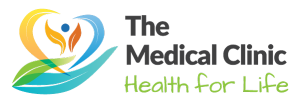Platelet Rich Plasma Therapy (PRP) is an innovative treatment which involves accelerating body’s natural ability to repair itself.
For an initial assessment or if you have any questions about the treatment, please book an appointment with Dr Julia Guzenko
What does it involve?
After an assessment, blood is taken from the patient and prepared in a certain way to obtain plasma, which is activated under a light and injected into the affected area under local anaesthetic.
The process will take around 45 minutes to one hour.
It is recommended to have a series of 3-4 injections with an annual top up (depending on a condition) to obtain best results
How does it work?
The activated plasma contains growth factors which promote cells to multiply and accelerate healing resulting in tissue repair in a natural way
When compared to cortisone injections, PRP shows better and more stable results which stay longer and you can enjoy your usual activities sooner.
The effect of steroid injection is usually rapid but declines very quickly, it reduces inflammation, rather than induces healing.
What can be treated with PRP?
What can be treated with PRP?
– Osteoarthritis
– Degenerative knee condition
– Muscle and tendon tears
– Tennis elbow
– Golfer’s elbow
– Bursitis
– Rotator cuff injuries
– Plantar fasciitis
– Achilles tendon injury
Benefits of PRP
- Improves function and mobility
- promote stable and longstanding results
- no risk of disease transmission or allergic reactions
- may help to delay or avoid surgery
After the treatment
The treatment may aggravate inflammatory response and cause pain and discomfort in the injection site temporarily. It is suggested that you arrange pick up and drop off after the treatment.
Are there any side effects?
The risk of side effects is low and may include pain and swelling, which should usually resolve within few hours or days.
For an initial assessment or if you have any questions about the treatment, please book an appointment with Dr Julia Guzenko
Do you have a tendon injury or osteoarthritis?
Platelet Rich Plasma Therapy (PRP) is an innovative treatment which involves accelerating body’s natural ability to repair itself.
What does it involve?
After an assessment, blood is taken from the patient and prepared in a certain way to obtain plasma, which is activated under a light and injected into the affected area under local anaesthetic. The process will take around 45 minutes to one hour. It is recommended to have a series of 3-4 injections with an annual top up (depending on a condition) to obtain best results
How does it work?
The activated plasma contains growth factors which promote cells to multiply and accelerate healing resulting in tissue repair in a natural way.
When compared to cortisone injections, PRP shows better and more stable results which stay longer and you can enjoy your usual activities sooner. The effect of steroid injection is usually rapid but declines very quickly, it reduces inflammation, rather than induces healing.
What can be treated with PRP?
- Osteoarthritis
- Degenerative knee condition
- Muscle and tendon tears
- Tennis elbow
- Golfer’s elbow
- Bursitis
- Rotator cuff injuries
- Plantar fasciitis
- Achilles tendon injury
Benefits of PRP
- Improves function and mobility
- promote stable and longstanding results
- no risk of disease transmission or allergic reactions
- may help to delay or avoid surgery
After the treatment
The treatment may aggravate inflammatory response and cause pain and discomfort in the injection site temporarily. It is suggested that you arrange pick up and drop off after the treatment.
Are there any side effects?
The risk of side effects is low and may include pain and swelling, which should usually resolve within few hours or days.



